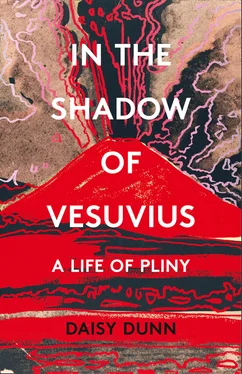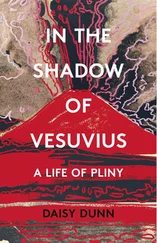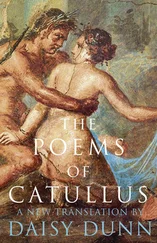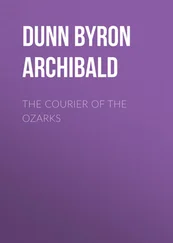1 ...7 8 9 11 12 13 ...17 Five years after Bacon’s death, Vesuvius erupted in the largest and most catastrophic explosion recorded since AD 79. 18Between three and eighteen thousand people were thought to have perished in the Plinian cloud and ensuing pyroclastic flows. Francis Bacon might have missed his chance to inspect the kind of ash that had extinguished his idol, but there were many more men like him who took the latest eruption as a cue to explore the history of the volcano. Across Europe, the eruption awoke new interest in the lives of the two Plinys. That Vesuvius had shown itself to be as deadly as Pliny claimed in his letters to Tacitus offered adventurers an unprecedented impetus to prove their daring. Inspired by Pliny’s visceral descriptions in his letters, Englishmen began to travel to Naples in increasing numbers and test their resolve in the shadow of the crater.
Among them was Sir William Hamilton. The future husband of Emma, mistress of Lord Nelson, Sir William had begun his career in the military before becoming MP for Midhurst in Sussex and being dispatched as British envoy to Naples. Upon arriving in the region in the 1760s, he witnessed a series of volcanic eruptions, which he determined to document in detail. The explosions were relatively small but even so their force surprised him. He was in his villa one morning when he saw a cloud rise from Vesuvius in ‘the exact shape of a huge pine-tree, such as Pliny the younger [ sic ] described in his letter to Tacitus’. 19When he was sure the lava had been released and it was safe enough to leave the house, he ventured outside to explore. Just as he was examining the lava, there was a bang, the mountain split once more, and ‘a fountain of liquid fire shot up many feet high, and then, like a torrent, rolled on directly towards us’. As the sky grew dark and the smell of sulphur became ‘very offensive’, he and his guide turned on their heels and ‘ran near three miles without stopping’, the ground trembling all the while beneath their feet. 20

Pliny the Elder was not alone in his fascination with natural phenomena. A banker named Lucius Caecilius Iucundus adorned the household shrine of his villa in Pompeii with scenes from the devastating earthquake of AD 63. A temple of Jupiter, Juno and Minerva and an archway to the forum are shown swaying on their foundations.
Hamilton sent observation after observation of the volcanic activity to the Royal Society, of which he was a fellow. His letters later formed the basis for a book. Hamilton’s Campi Phlegraei, on the ‘flaming fields’ of Campania, was illustrated with colour prints by an artist named Pietro Fabris, who captured perfectly the sense of complacence that such a beautiful landmark could inspire in those who lived beneath it. Here was flame-crowned Vesuvius, billowing puffs of smoke into the pale skies of Italy while finely attired ladies looked on casually from across the water.
Hamilton had arrived in time to observe some of the excavations which had begun at Pompeii. It had long been known that cities lay hidden underground. Already in Francis Bacon’s time, an Italian architect had chanced upon the ruins of Pompeii while digging a canal. There is evidence that people had begun tunnelling through the ancient layers of Herculaneum too, as early as the thirteenth or fourteenth century. 21But it was only in the decades before Hamilton arrived, and at the instruction of King Charles III of Spain, that the process of uncovering the cities began in earnest. Excavations were first undertaken by a Spanish military engineer named Rocque Joaquin de Alcubierre in Herculaneum in 1738 and at Pompeii a decade later. As Hamilton noted, the ancient villas of Pompeii were ‘covered about ten or fifteen feet, with pumice and fragments of lava, some of which weigh three pounds’. 22Excavators at both sites made a priority of removing precious objects and wall paintings from the layers. Like the poor and displaced who had returned to the buried cities in the immediate aftermath of the disaster and squeezed into the villas to claim whatever Vesuvius had failed to, the excavators worked more greedily than methodically. Their digs were haphazard, sporadic, and limited in scope, with little thought given to stabilising the structures underground.
Preserved within the snow-like layers were imprints of the victims of the disaster of AD 79. The shapes of human bodies frozen in time were more palpable than fossils, but proved far less easy to extract from the ground. It was only some decades later, in the mid-nineteenth century, that a Neapolitan numismatist and archaeologist named Giuseppe Fiorelli developed a technique for preserving what remained of the ancient dead. Fiorelli was appointed director of excavations at the University of Naples in 1860 following a tumultuous period in his life. Arrested and imprisoned on charges of colluding with revolutionary forces, and deprived of his research notes, he was fortunate to have been released a short time later and made secretary to the Count of Syracuse. 23Following archaeological work at Cumae, he arrived in Pompeii, and was a few years into his new post when he poured plaster into the cavities which the shapes of the dead had left behind in the volcanic deposit. The process enabled whole bodies to be cast in the positive.
Fiorelli went on to make dozens more casts through the same technique. He came as close as anyone could to raising the dead from their undignified tombs and reinstating them among the living. His casts gave each victim an identity. These were not just men, women, children, dogs. Every cowering shoulder and clenched fist represented an individual’s response to the tragedy. Each position captured something of their personality, or at least you imagine that it did; it is easy to forget that each cast is more than a work of art. The flesh had decayed over time but, in his casts, Fiorelli created the illusion of having preserved it forever.
Excavations are still ongoing in the Bay of Naples. Significant parts of Pompeii and Herculaneum are yet to be uncovered, but the process of sifting through the layers has already called into question when precisely in AD 79 Vesuvius erupted. Of all the details Pliny provides in his accounts of the eruption, the date has proven the most contentious. The manuscripts of his letters offer a range of dates, of which 24 August is the most secure textually. 24But while there is evidence in the concretised ash that trees were still in leaf and the broad beans of summer still fresh at the time of the eruption, other signs suggest a later date. 25Among the material remains discovered in the layers are olives, plums, figs and pomegranates, which are harvested principally in September and October. 26Braziers were positioned in such a way as to heat rooms in some of the villas. Summer clothes had made way for the warmer coverings of winter. 27Was Pliny mistaken over the date, or were these the fruits of another harvest, the preparations for an unseasonably cold August, the heaviest fabrics the victims could find to protect their skin from burning pumice?
The object most commonly cited in support of a post-August date is a single coin from a hoard discovered in the ‘House of the Golden Bracelet’ in Pompeii, where two adults and two children were also preserved in their final tragic moments. So embedded in the volcanic layers that it could not simply have been dropped at the site after the eruption, the coin features an inscription that led scholars to date it to post early September AD 79. The coin, however, is very poorly preserved, and a recent re-examination has revealed that its legend was misread by the original interpreter. The coin has now been dated to July or August AD 79. 28The strongest evidence today for a later eruption date is the fact that the volcanic matter was dispersed in a south-easterly direction; the winds in the Bay of Naples seldom blow south-east in August. 29
Читать дальше













